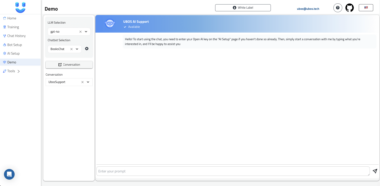Here’s what you would need to create an effective MIDI composition system built on FluidSynth: Core MIDI Functions for Your MCP Server
- FluidSynth Integration Functions
initialize_fluidsynth() - Set up FluidSynth with proper configurations load_soundfont(soundfont_path) - Load SoundFont files (.sf2) for instrument sounds set_gain(gain_value) - Control the overall volume of the synth set_reverb(room_size, damping, width, level) - Configure reverb effects set_chorus(nr, level, speed, depth, type) - Configure chorus effects
- MIDI Composition Functions
play_note(note, velocity, duration, channel) - Play single notes with control over velocity and duration play_chord(notes, velocity, duration, channel) - Play multiple notes simultaneously as chords create_sequence(notes, durations, velocities, channel) - Create sequences of notes with timing play_midi_file(file_path) - Load and play existing MIDI files record_midi(duration) - Record MIDI input for a specified duration
- Advanced Musical Functions
create_melody(scale, key, length, rhythm_pattern) - Generate melodies based on musical rules create_chord_progression(progression, style, tempo) - Create harmonic progressions with different voicings create_drum_pattern(style, tempo, variations) - Generate rhythmic patterns for percussion create_arpeggio(chord, pattern, tempo) - Create arpeggiated patterns from chord structures create_bassline(chord_progression, style, tempo) - Generate bass patterns that complement chord progressions
- Composition Management
create_track(name, instrument, channel) - Create a new track with specified instrument mute_track(track_id) - Silence a specific track solo_track(track_id) - Solo a specific track set_track_volume(track_id, volume) - Adjust volume for individual tracks set_track_pan(track_id, pan) - Adjust stereo positioning
- Project Management
create_project(name, tempo, time_signature) - Initialize a new composition project save_project(path) - Save the current project state load_project(path) - Load a saved project export_midi(path) - Export the composition as a standard MIDI file export_audio(path, format) - Render the composition to audio using FluidSynth
- Real-time Collaboration and Interaction
start_midi_server(port) - Start a server that listens for MIDI events connect_midi_device(device_name) - Connect to external MIDI hardware send_midi_event(event_type, parameters) - Send MIDI events to connected devices sync_tempo(tempo) - Synchronize tempo across connected systems
Implementation Approach Based on the SuperCollider MCP server I examined, here’s how you could structure your FluidSynth MIDI server:
Python Backend: Use Python with the python-osc library for communication and pyfluidsynth for FluidSynth integration MCP Protocol Implementation: Create a server that follows the Model Context Protocol structure Architecture:
AI Assistant (Claude) calls methods on your MCP Server Your server translates these to FluidSynth commands FluidSynth generates the actual audio
Getting Started To build this system, you would need to:
Create a Python project with the necessary dependencies:
pyfluidsynth - For FluidSynth integration mcp - For MCP protocol support python-osc - For OSC communication (if needed) mido - For MIDI file handling
Create a main server file (e.g., server.py) that:
Initializes FluidSynth Registers all your music composition methods Handles communication with Claude
Design the method signatures in a way that allows Claude to easily compose music, with well-defined parameters and reasonable defaults.
Synth MIDI Composition Server
Project Details
- kimjune01/synth-mcp
- Last Updated: 5/6/2025
Recomended MCP Servers
A model context protocol server for your Gmail

server that provides seamless integration with Tailscale's CLI commands and REST API, enabling automated network management and monitoring...
An MCP server implementation that integrates with 4o-image API, enabling LLMs and other AI systems to generate and...

A MCP server which can query bus info, routes, eta, etc.
Essential UI blocks for building mobile web apps.


This read-only MCP Server allows you to connect to Google Sheets data from Claude Desktop through CData JDBC...

Non-Invasive goroutine inspector
Create PowerPoint presentations with a powerful, concise JavaScript API.

mcp_voice_identify
Obsidian MCP (Model Context Protocol) 服务器
 From vibe coding to vibe deployment. UBOS MCP turns ideas into infra with one message.
From vibe coding to vibe deployment. UBOS MCP turns ideas into infra with one message.





